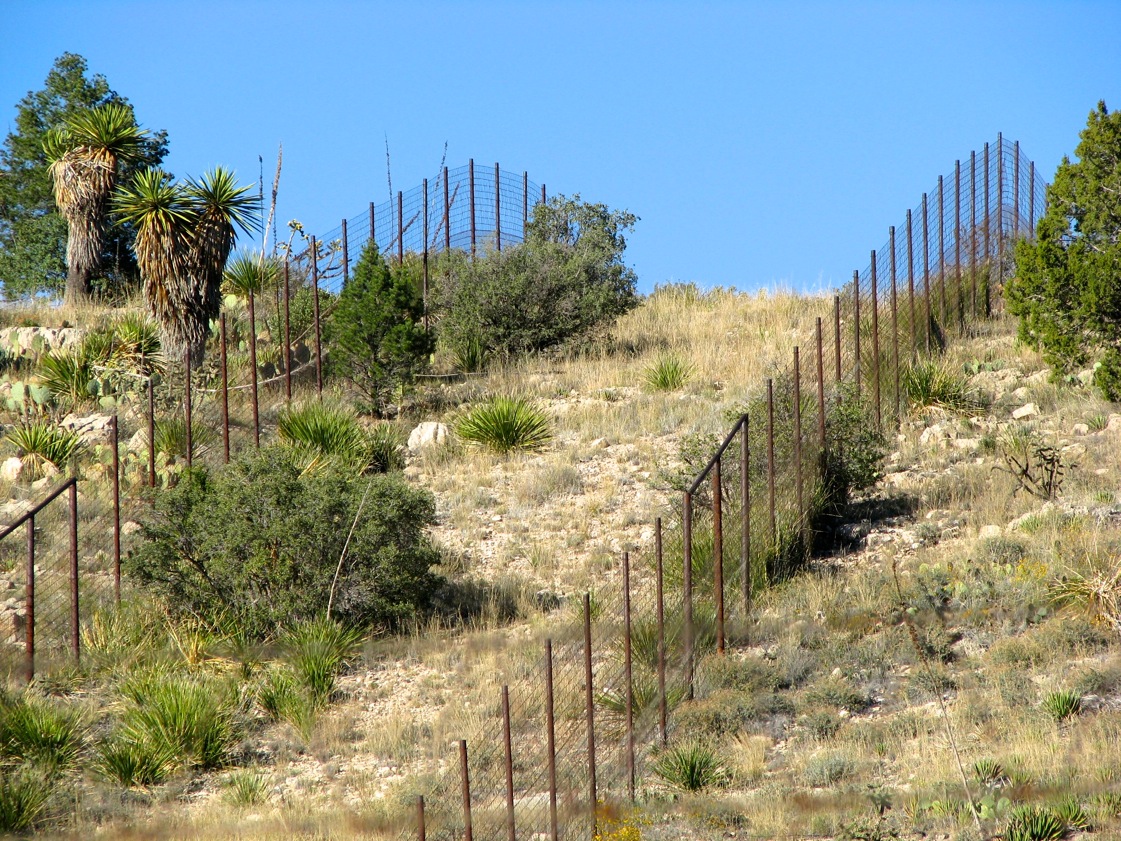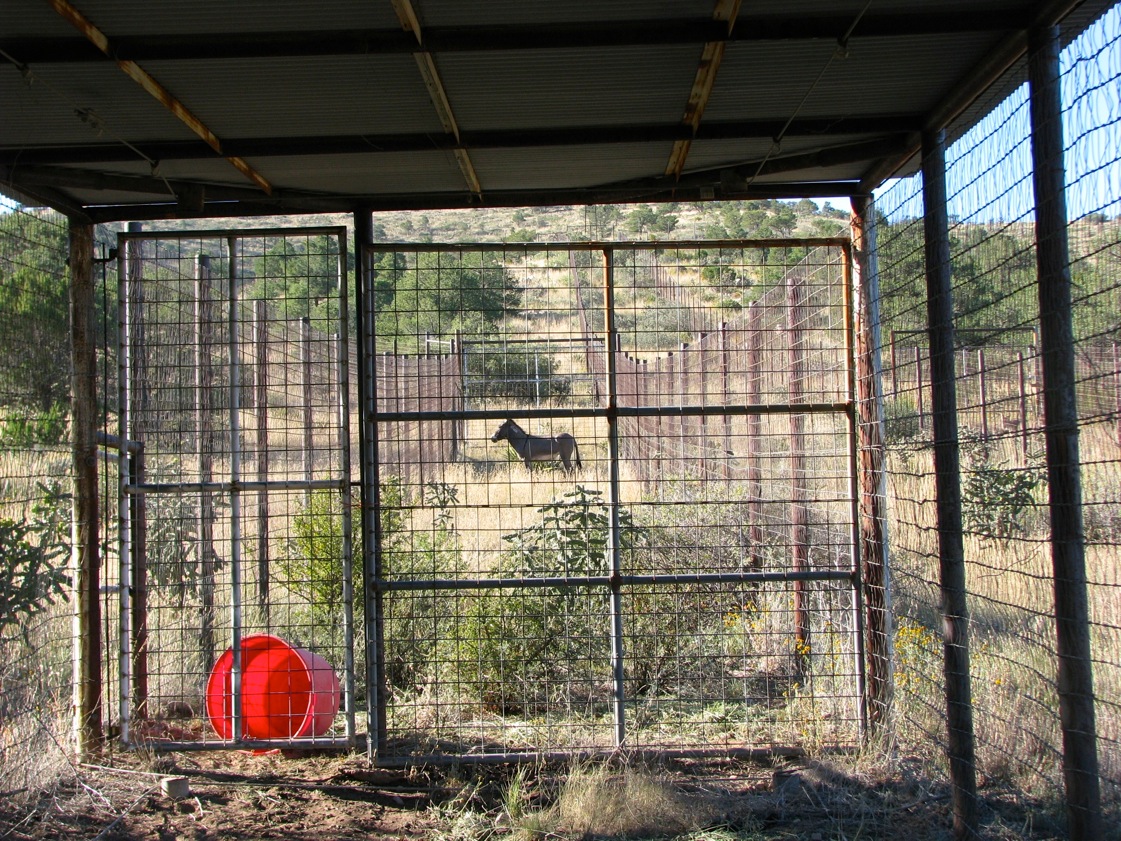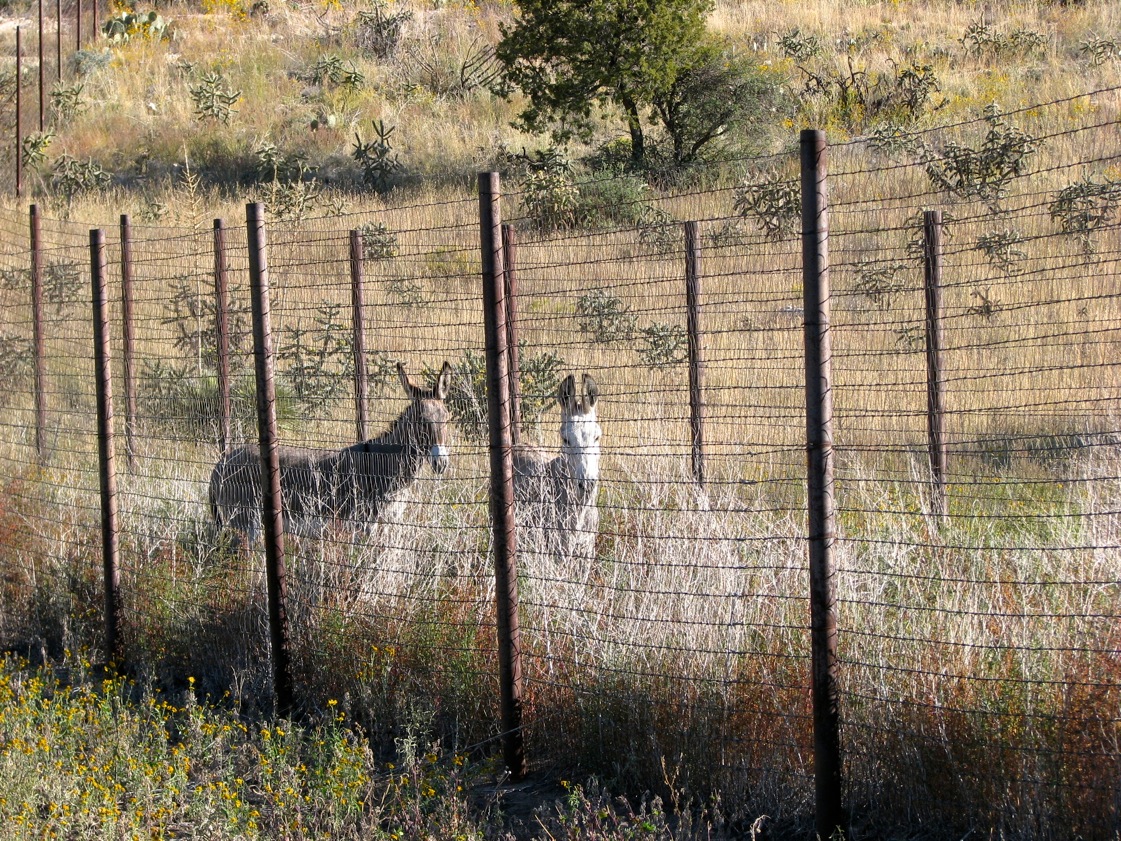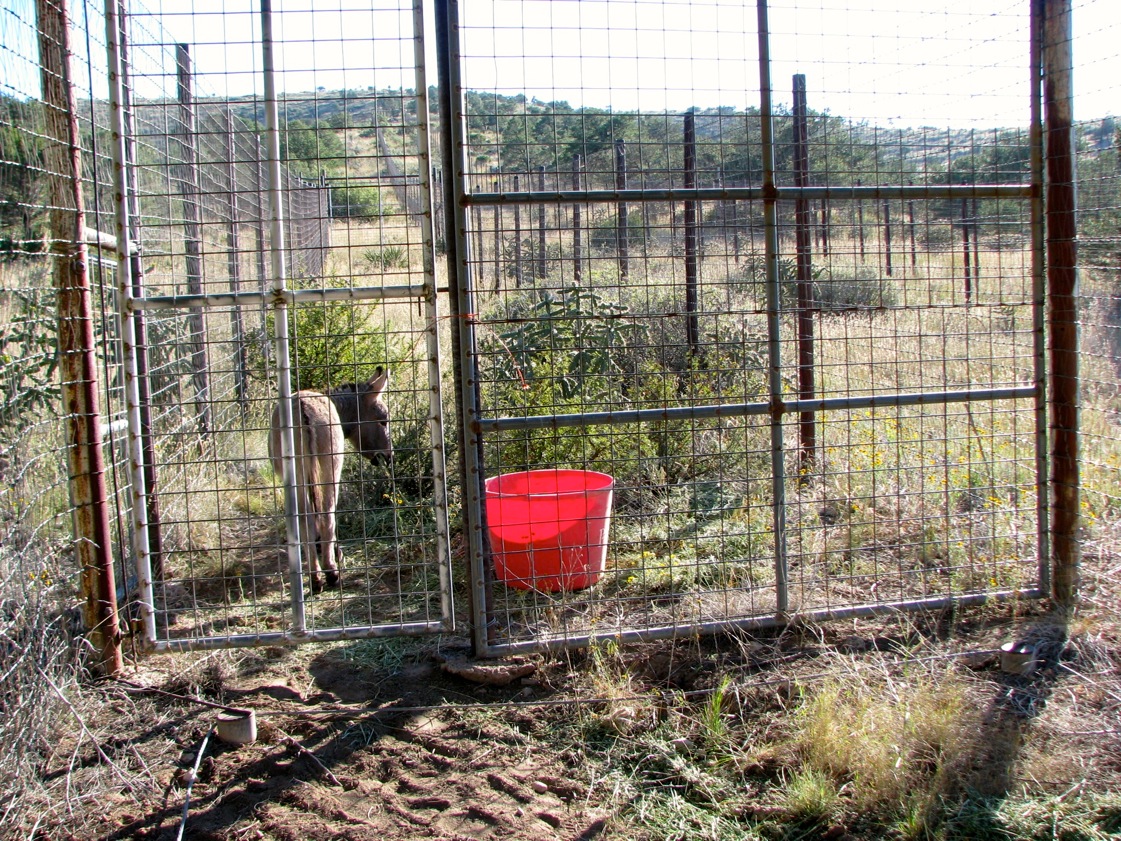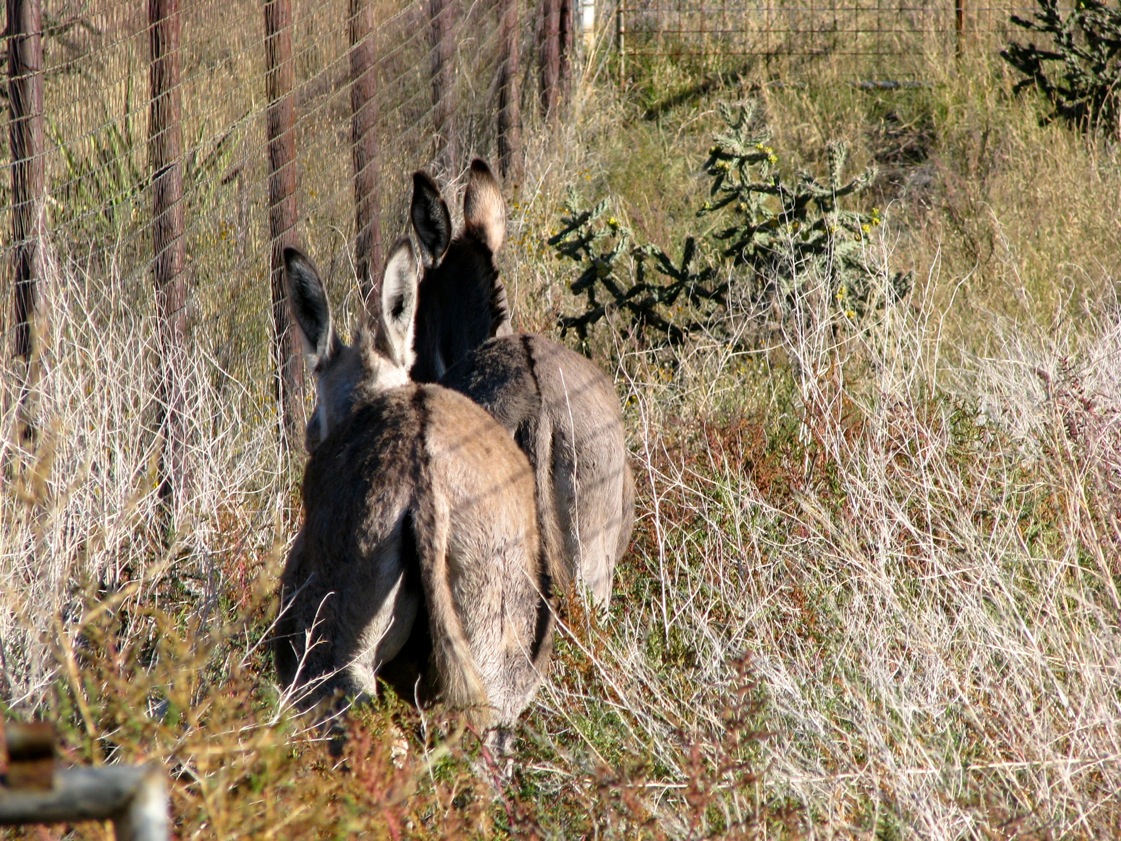We and the Burro
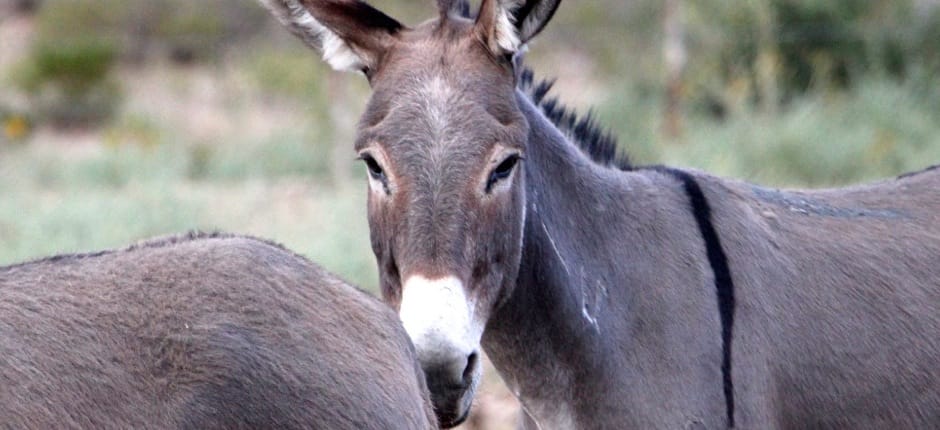
About a year and a half ago I was contacted by Marjorie Farabee, President of the Burro Protection League. Marjorie hesitantly asked me if I was aware that wild burros were being eradicated down at the Big Bend Ranch State Park: She thought I must support this, like most bighorn advocates.
I did not know of this policy, but I looked into this and discovered that indeed it was happening notwithstanding official denials it relates to sheep. As shown by the Texas Parks and Wildlife Department’s own Internal Investigation Report on burro eradications, the reason for the policy is that Department biologists and managers all think that burros “compete” with desert bighorn sheep, a high-value hunting species being reintroduced around different mountain ranges of Texas. On our ranch we have found they do not, but the Department, Texas Wildlife Association, Texas Bighorn Society and The Nature Conservancy have endorsed this.
I started looking into the physiological underpinnings of these burro eradications. The more I learned about burros, the more I realized that they are more than just interesting animals which are an important part of our far-West Texas culture. Properly managed, burros are very beneficial to other large grazers, and as a result, to habitat and all the wild animals that live in it.
We became intrigued with the burros and agreed to take rescue burros from the Big Bend Ranch State Park. The trapping program down there never materialized: Park managers say that burros cannot be trapped. In the meantime the “Burro Ladies,” with whom I had become friendly informed us that there was a big trap going on in California, on federal rangeland. Some very interesting wild burro families were going to be available for adoption. They asked us to help wild horse protection advocates and take some of those at Circle. And so we said yes, we would take 12 as an experiment.
Ten jennies, a young jack and an old jack arrived at Circle in September, 2012. Our plan was to settle them down, but keep them on the ranch, moving about as they might. So we put them in pens for a month, feeding them and trying to get them to imprint on our property. After a few weeks we moved them into a 200-acre trap where the feed was better and they would have more room to move around. One day, all the burros except the young jack (which had been run off by the old jack) were gone. We checked the fences; sure enough there was a small hole in a water gap. We found a mountain lion track at that hole and so it seemed that the animals were either chased through that hole by a lion, or more likely the jack took them off as jack burros often do with their harem jennies.
“The Burros Went to the Mountains”
And so we spent the next 10 days trying to gather these animals up. We got three men on horseback; they spent three days in the mountains around Circle Ranch. The animals were there and they were not afraid of people. They just didn’t want to come back to Circle: “stubborn as a burro.” Every time that they were surrounded from above and pushed down to the fence where the gates were kept open, they would squirt through the sides. Once we got two of them through the gate. They went down the fence until they found another opening and went back out into the high country.
The “Cowboy Way” had failed! This appeared to be an insoluble problem.
So, next we considered hiring a helicopter to come in. This was problematical because at altitude in our mountains only big machines can operate. Those machines cannot dodge and dart to move animals as they can at sea level when herding cattle. But in addition, burros don’t want to be pushed. So the pilot said it was 30% likely he could succeed and why not just shoot them?!
Now I was getting worried. So, we contacted the Burro Ladies in California.
“Carol Rule Rules!”
Carol Rule has extensive experience in herding wild horses in open ranges in the West. Our other burro expert is Deborah Hurley. Deborah is a trained artist who had a successful career in advertising, which she left to become a trapeze performer. She is married and a mother. She does lots of riding and as an avocation works with wild horses.
“Byk, Deborah, Carol, & Pygmy Burros”
We got Deborah and Carol out to the ranch, only to learn the burros had now left our neighbor’s ranch. They could not have been in a worse place! They were at the TPWD’s Wildlife Management Area next door! Considering this whole thing started with the Texas Parks & Wildlife shooting burros because they believe burros hurt Desert Bighorn Sheep on their managed lands, you can imagine that I was pretty nervous, and anxious to get them back.
“WMA Rim at Left”
It happens that the Sierra Diablo WMA was the initializing point for the program to restore Desert Bighorn Sheep in far-West Texas. In the early days of the project about 50 acres of pens were built up at the WMA with the idea of maintaining a captive population, protected from predators, wherein animals would be bred for subsequent release and transfer. This was a great idea on paper. But in practice, when you fence wild animals up on artificial feed bad things develop. After a few years the captive sheep were dying of diseases and malnutrition. Not understanding why this was happening showed that poor animal-husbandry skills were the weak link in the program. So the gates were opened whereupon the sheep were free to range. They immediately got well and began to multiply like crazy. But the pens remain.
“Old Sheep Pens at Sierra Diablo Wildlife Management Area”
So there are these huge, empty pens and sheds sitting up on the WMA. Guess what? The burros like the sheds.
So when we went up to the WMA to look for the burros we discovered that the old jennies had been using them for shelter. So, we put lots of tasty alfalfa hay in the pens along with water and feed that horses like. And of course, the burros started going in and out of the pens. These animals had broken into three family groups which our foreman, Evi, scouted. We immediately caught the first group of three old jennies and brought them on back to Circle. The old jack was keeping his harem at a distance.
Next, at the Ladies suggestion we got Byk Banta’s three little pygmy burros and put them in one of the side pens as “bait burros.” They were very cooperative, squalled loudly and were heard for miles. Pretty soon we had all the remaining burros coming and going in the pens late at night, leaving early.
“Bait Burro”
So our mounted burro expedition had now turned out to consist of closing the gate on burros that had readily walked into these fed pens. Meantime, our neighbors up at the WMA said they were conducting a couple of big seasonal hunts and needed us to stay out of the WMA for a while. This we did but we left behind feed, water and grain in those pens. About a week later Clay Roberts, the assistant manager called and said that he had gone up there and sure enough there were the burros; he had closed the gate on them and would we please come get them. We did. Now we had all except one old jenny who remains missing. We had lost a little orphan foal which was separated from its dam in our first herding, but another healthy foal was there.
We now have the burros safely back at Circle Ranch. Needless to say, they are in burro lock-up.
“Bad Boy” as we call the lascivious jack who absconded with the jennies, is being sent to burro reformatory in East Texas.
“Naughty, Naughty!”
It is our thought that the other jennies will settle down when they are not being pushed around by a dominant male. Our “Stay at Home” jack has been gelded.
“Pygmy Burros and Stay-Home Jack”
Conclusions: The first step in dealing with these animals is that you have to be able to keep them around. Having them run off just gets too many people too upset.
The seasonal breeding behavior of burros causes behavioral changes: avoid breeders. There are plenty of rescue burros; we don’t need breeding animals like in the wild although some day after we have gained skills this might be feasible.
If you would have asked me after four days of unsuccessfully trying to herd these animals, and being told by the helicopter pilot that even after spending $5,000 or more to move the animals they could offer no better than the 30% chance of success, I would have told you that I understand why some people think the only way to get rid of a burro is to shoot it.
A week later I knew that was wrong. These animals will walk into a fed pen. They are not afraid of people: Not that long ago all of these animals were domesticated and so they do not carry a genetic predisposition to fear humans although some are wilder than others.
Burros will not drive downhill. All you will accomplish by trying to herd and make them go somewhere they don’t want to go is make them afraid of herders.
Ask those who say that they cannot trap burros if they are shooting burros as they try to trap them: These animals are very smart. Of course they are terrorized by being shot. If you are shooting burros you will not be able to trap them!
When you’re stuck, you’re stuck! The weak link in burro management has to date been animal husbandry which we are not discovering, but re-learning. We must not be unsympathetic to the fact that Park’s management simply doesn’t know how to do this. We couldn’t either until the Burro Ladies offered critical insights to burro thinking; yes burros do think! The good news is a tiny tug will get everybody unstuck.
This is because it is ridiculously easy to trap a burro. Build a 10-acre pen with sheds, keep water and hay and burro goodies in it. Put two or three bait burros in a small sub-pen where they will make noise and smells which will reassure and attract other burros. Let the burros find all this, become accustomed to using it and in a week or two put somebody there at night and close the gate.
“Trapped Burros”
Burros do not work on time clocks. This cannot be done on a 5 – 8 schedule. Somebody is going to have to stay up or camp out at night and do it.
Cost? A 10-acre pen will contain about 435,600 sq. ft. A square containing that much area is 660 feet on a side. Four sides of 660 feet each are 2,640 feet, say half a mile. A mile of fence in the desert costs about $7,500: so, half a mile will cost $3,750. This is about two hours of helicopter flight time plus move-on charges for the machine you need in the high mountains in order to shoot “exotics.” Rolling all this into a final number to include feed, water and a little personnel, a burro trapping can be done for $5,000. And you wind up with a pen which can be used for wildlife releases, studies, viewing and other things.
The burro protection folks should raise the money to build such pens. Texas Parks & Wildlife can and should help, dedicating at the very least some of the budget that they spend to eradicate “exotics,” and perhaps also some small fraction of the public relations budgets they incur to overcome the massive damage they do to their popularity. It is a “rounding-error” in the budget cuts a well-organized horse community could inflict in reaction to burro eradications.
Burro trapping is easy, provided those doing it know what makes burros tick. There are two people in the Texas Parks & Wildlife system who now have hands-on experience with this: that would be the manager and the assistant manager of the Sierra Diablo Wildlife Management Area next door to Circle Ranch. In fact, Mike Pittman and Clay Roberts could not have been more helpful and understanding. Clay even brought us the little orphaned foal. Circle Ranch will be happy to assist in the planning and execution. We will contribute. The Burro Ladies in California have expressed a willingness to come back to Texas to help.
Our plans at Circle are to incorporate these animals into cattle and wildlife herds. It has been proven in Africa by Princeton University that cattle run with burros during the growing season gain 50% more because the burros eat stale grass that cattle cannot digest leaving behind green grass and stimulating the growth of fresh grass which is more digestible by cattle. This is a process called “facilitation.” It is also proven that cattle grazed with sheep improve performance of both. We have proven at Circle that cattle help bighorn. I will say that what helps the cows that help the sheep, helps the sheep!
Creatures like burros and other large grazers co-evolved with wild animals and plants. For 50-million years wild horses and their ancestors were in our deserts: Long before humans, deer, and desert bighorn sheep, they were in these systems. The idea that horses do not belong there any longer simply because the particular species surviving human impact today does not exactly coincide with some pre-human species reflects intellectual nitpicking, dogmatism over common sense, and bad range practice! This is an example of “perfect” becoming the enemy of “good”. The plants are the same. These still need animal impact, without which desert grasslands will die, as anyone can see happening across the Southwest. Plants really don’t care whether the animals that heal them are exactly identical to those that would have been there 10,000 years ago.
Burros are a cool little animal which obviously requires management, but which as a part of a diverse animal group can help wildlife, plants and everything else. The key to restoring our deserts is to think holistically. Always, focus on increasing animal impact from a variety of animals. Above all, when in doubt, copy Nature!
“Chris & Laura”
Stay tuned as we continue our burro journey in this spirit.
For more information on far-West Texas burros, click here:






